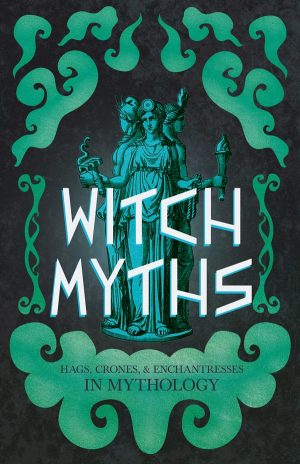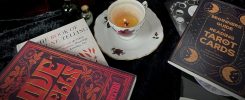Imbolc holds profound resonance speaking to the history of women’s empowerment. Join us as we explore the feminist origins of the Sabbat.
As the Earth begins to thaw and stir to life again, we start to prepare the land for the Spring’s sowing season and contemplate our plans for the year ahead. Whether you know the Sabbat as Imbolc, Imbolg, Saint Brigid’s Day, or Candlemas, the festival is celebrated on February 1st, marks the halfway point between Winter and Spring, and is a celebration of light and fertility.
This turn of the Wheel brings promises of brighter days, budding flowers, and renewal, but Imbolc also holds a profound resonance that speaks to the history of women’s empowerment and feminism.
Feminist Origins of Imbolc
At Imbolc, Cailleach, the Winter Crone, finally loses her hold on the land. As she passes her rule over to the goddess Brigid, the Sun’s warmth grows stronger, and the days lengthen. The goddess of poetry, healing, and smithcraft, Brigid is the heart of Imbolc, embodying a rare trifecta of creative and practical power. As a creator and warrior, nurturer and craftsman, she exists as an archetype of the balance and strength in femininity.
In preparation of Brigid’s visitation, families would make Bridey dolls, effigies of the goddess made from dried grass, straw, and herbs, in her honour. Brigid crosses, symbolising the Sun, were also made and placed above windows and doorways to protect from evil spirits. Bonfires were lit in the lead up to the Sabbat to honour Brigid in the hope she would thaw the land for the arrival of Spring.
Unlike many other Celtic deities who were worshipped regionally, Brigid was revered across Ireland, Scotland, and the Isle of Man. As communities came together to honour the goddess at Imbolc, it was also a time of thanksgiving for women’s roles. In ancient agrarian societies, the work of women was crucial during the Winter season. Traditionally, they were caretakers of hearth and home, sustaining their families through the dark half of the year. At Imbolc, this labour was recognised and ritualised, offering gratitude for the often-overlooked work of women. The lighting of candles and the tending of hearth fires are central rituals during this Sabbat, elevating the daily work of women, linking their efforts to divine purpose and symbolising warmth and sustenance.
Imbolc also marks the start of lambing season, the Sabbat’s name translating to ‘ewe’s milk’. Dairy products, including milk, butter, and cheese, are prominently featured in traditional celebrations. As both a symbolic and literal source of nourishment, the celebration and thanksgiving for milk and of the coming Spring reinforced the sacred connection between women’s bodies and new life.
As Christian doctrine spread, absorbing and transforming local Pagan traditions, the goddess Brigid was syncretised into Saint Brigid of Kildare, the mother saint of Ireland. Saint Brigid inherited many attributes of her goddess predecessor, including her association with fire, creativity, and fertility. Her miracles included turning water into beer, multiplying food, and granting healing, acts that echo the nurturing powers attributed to the goddess. Medieval Irish texts record Saint Brigid as the first Irish nun, and the founder of the Kildare abbey. The monastic site became a centre of learning and spiritual authority, and she’s now venerated for creating spaces where women and men were able to be equals in spiritual practice. Even framed within Catholic theology, Brigid is a symbol of fierce femininity, embodying strength and compassion, and challenging patriarchal norms.
As modern feminists continue to challenge systemic inequalities, Imbolc calls us to honour the cycles of rest and renewal, to light the fires of inspiration, and to nurture the seeds of change. In reclaiming Imbolc as a feminist festival, we reconnect with a legacy that predates written history, a legacy that celebrates women not just as caretakers, but as creators, innovators, and leaders.
Imbolc’s themes align seamlessly with feminist ideals. Brigid was not confined to a single role, she was a multifaceted goddess and this mirrors the reality for many women who balance responsibilities. Her mythology affirms that women can embody strength and ingenuity across many areas of life. Whether crafting poems, shaping tools, or healing wounds, Brigid’s example gives the work of women divine validation.
This Imbolc, whether you light a candle in her honour or make a Brigid’s cross, take a moment to honour the goddess Brigid and the countless women throughout history whose strength has brightened the darkest of times.
Wishing you a light and joyful Spring.
Blessed Imbolc.
Read more about inspiring magical women in this illustrated collection of witches in mythology.



